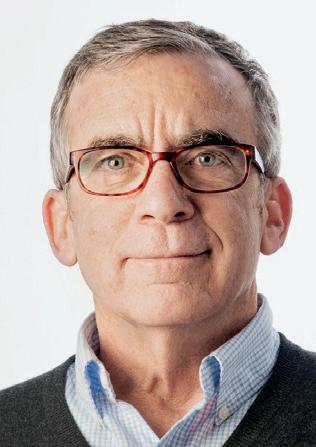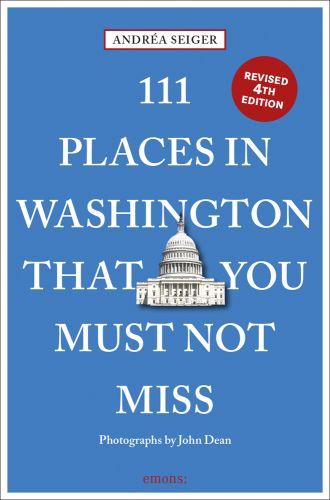

50 States Bike Route
Cycle through every state in a single day
How can a person bike from Maine to California in a single day?
The Washington Area Bicyclist Association (WABA) makes it easy each September with their annual 50 States Ride. The event takes 700 cyclists on a 62-mile (metric century, or 100 km) route that covers all the avenues that are named for the 50 states.
If you can’t make it to the event, you can take the trip on your own any day of the year using the online maps posted on the Ride with GPS site (www.ridewithgps.com) after each year’s ride. The routes vary somewhat from year to year, but the one thing that’s certain is that they’ll touch all 50 state-named avenues. If the 50 States Ride is a little too much of a commitment, there is also the 13 Colonies Ride, a 15-mile (24 km) route along the avenues named for those states. New in 2018 is the 35-mile “Route 66,” hitting eight avenues of the original states that the scenic highway passes through.
These rides are a wonderful way to see the sites throughout the capital. WABA’s mission is to make biking enjoyable and safe in the Washington region (aka DMV). The routes are designed to take riders to areas that they might not normally visit, and also on a tour through US history.
You may see the magnificent Emancipation Memorial, also known as the Freedman’s Memorial, in Lincoln Park as you ride along North Carolina Avenue SE. On Washington Avenue, SW, stop and pay your respects at the American Veterans Disabled for Life Memorial, honoring over 4 million veterans injured in the line of duty. On Louisiana Avenue NW is the Japanese American Memorial to Patriotism during World War II. The memorial’s stunning bronze cranes tangled in barbed wire symbolize the internment of Japanese Americans in prison camps from 1942 to 1946.
Take in the diversity, history, and beauty. And enjoy a drink on the rooftop of the Liaison Hotel at New Jersey Avenue, NW.
Address Multiple points in Washington, DC; contact Washington Area Bicyclist Association: +1 (202) 518-0524, www.waba.org, events@waba.org | Getting there Search for “50 States Ride” on www.ridewithgps.com for current and prior-year maps | Hours Unrestricted | Tip For elegant handmade accessories, clothing, decor and chocolates, delicious food, and hard-to-find wines and spirits from Latin America, stop into La Cosecha at Union Market (1280 4th Street NE, Washington, DC 20002).
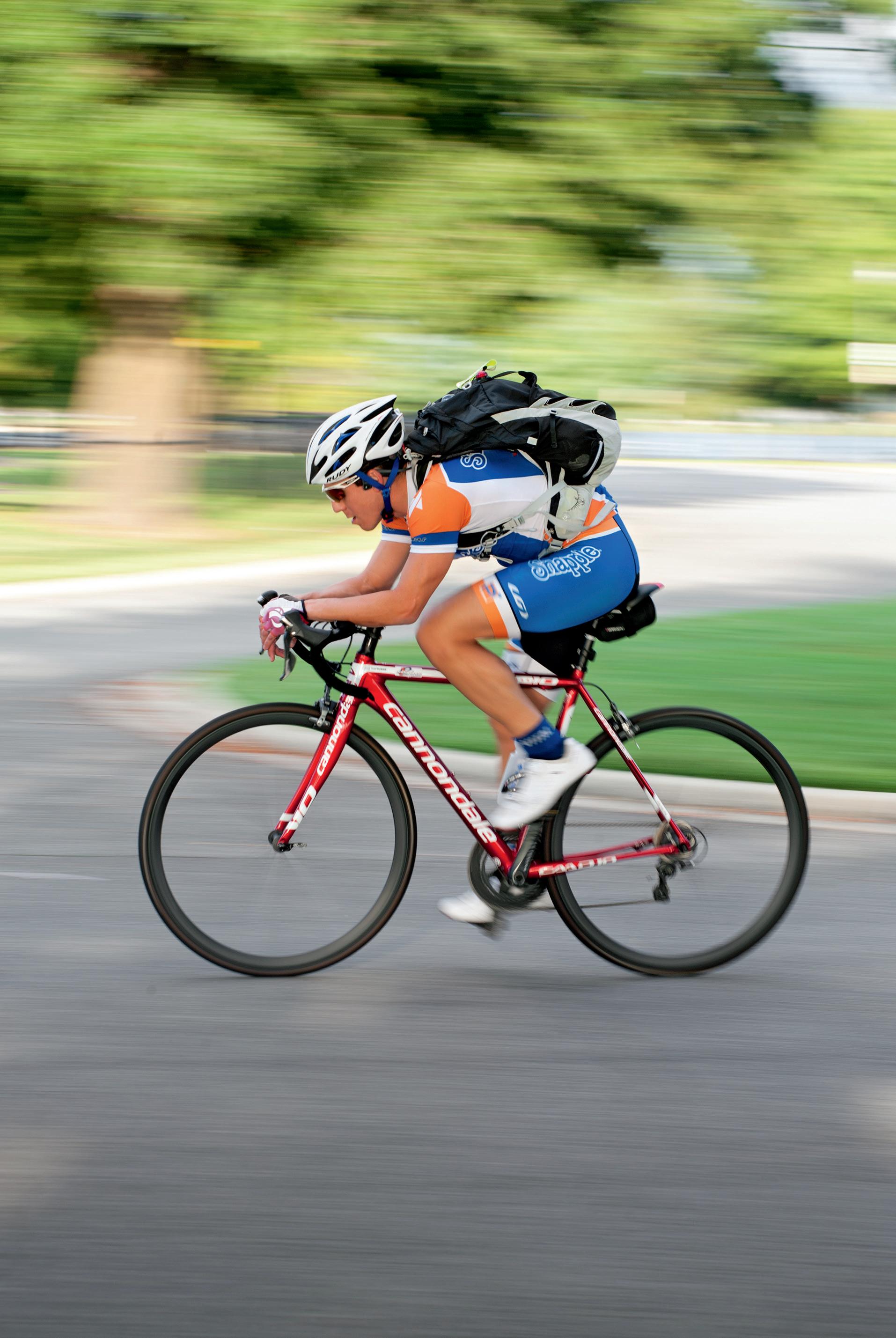
56 Signers Memorial
Chill out with the Founding Fathers
Constitution Gardens, including the Memorial to the 56 Signers of the Declaration of Independence, were dedicated for the US Bicentennial as a living homage to the founding of the republic. The memorial is nestled on a tiny island, reachable by wooden bridge. This mini oasis is a good spot to reflect on the actual people who risked livelihood, reputation, and even life to release the nascent country from the grips of King George III.
July 4, 1776 was the day the Declaration was adopted, not when voted on, nor when signed. The Committee of Five, Jefferson, Franklin, Adams, Sherman, and Livingston, were responsible for printing and circulating it to the 13 colonies. Overnight, 200 “Dunlap Broadsides” were printed in Philadelphia and dispatched on July 5. Only 26 originals remain intact today. The oldest signer, Benjamin Franklin, was 70, and the youngest, at 26, Edward Rutledge. Papers of the time were transported to different locations, and it appears that the writing in an unknown hand on the back of the Declaration was to identify it in a collection of rolled documents.
Hancock, of the conspicuous signature, was a smuggler of fine European goods. Sam Adams was a law school dropout. Franklin opened the first lending library. Jefferson was angry for life over the deletion of the anti-slavery paragraph. Gwinnett’s signature is the most valuable to collectors. Harrison’s son and great-grandson were later elected US Presidents. Rush published the first American chemistry book, and Hopkins co-built a telescope in 1769, used to track Venus’ path. Whipple was a sea captain by age 21, and Lynch was lost at sea at 30. Witherspoon was the only college President, and Middleton a world traveler. Two brothers Lee signed.
After Pearl Harbor, the Declaration and Constitution were moved from the National Archives to Fort Knox, where they remained until war’s end.
Address Constitution Avenue at 19th Street NW, Washington, DC 20245, www.nps.gov | Getting there Metro to Foggy Bottom-GWU (Blue, Orange, and Silver Line); bus 31, 32, 36 to Virginia Avenue & E Street NW; DC Circulator (National Mall Route) to Constitution Avenue at 18th Street NW | Hours Unrestricted | Tip The Lockkeeper’s House is the oldest structure on the Mall, a tiny 1835 stone house where the lockkeeper collected tolls, tended the Washington City Canal locks, and raised 13 children (Constitution Avenue NW and 17th Street NW, Washington, DC 20006, www.nps.gov/nr/travel/wash/dc34.htm).
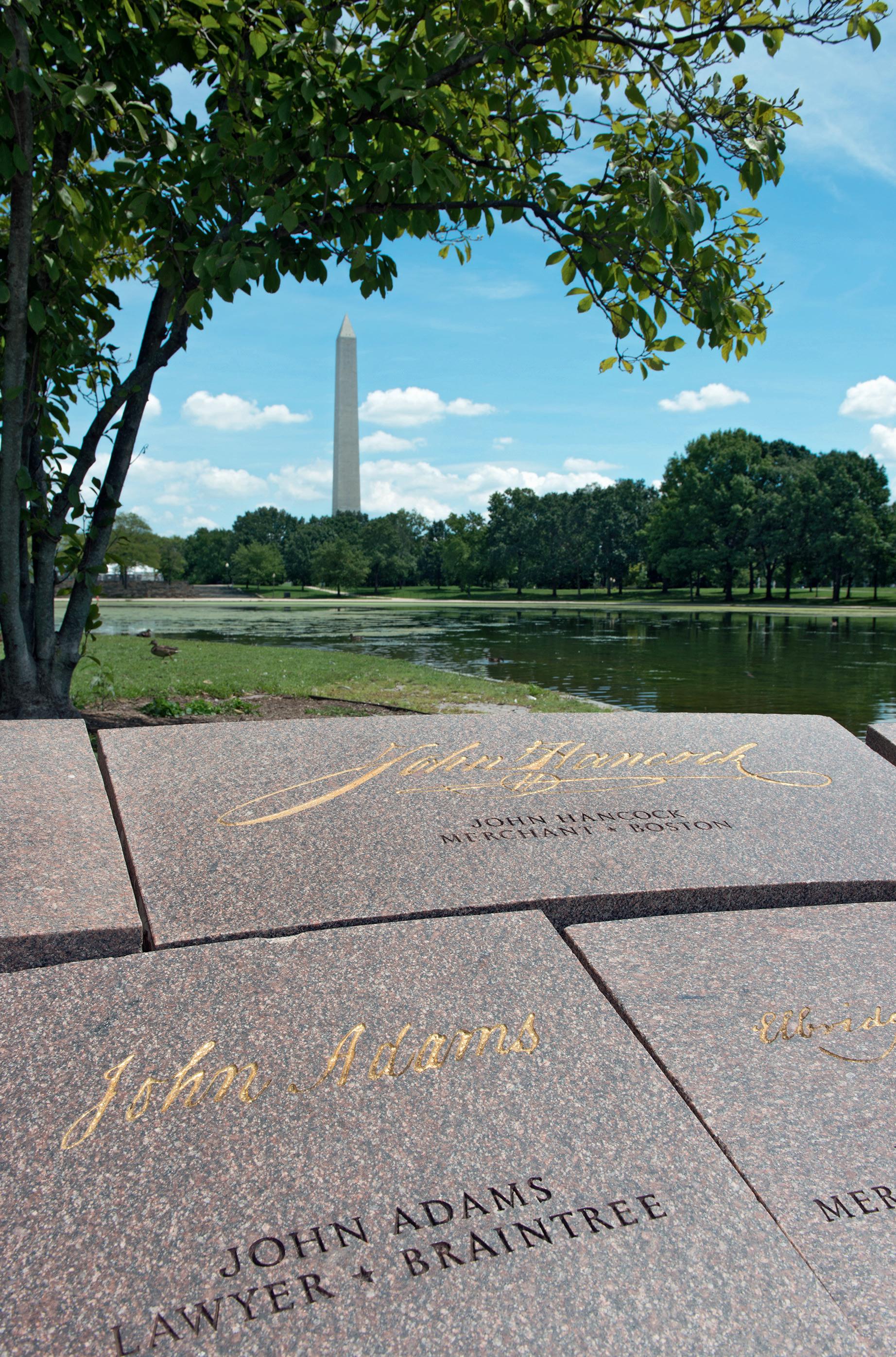
African American Civil War Museum
Telling the ancestors’ stories
Marquett, a young African American Civil War re-enactor, dressed in a period infantry uniform, considers himself the face of the museum in that, by virtue of his stature, he represents “the average look, size, and age of a colored Civil War soldier.” He and other staff members tell little-known stories of the formerly enslaved people and freedmen who had nothing to lose and everything to gain in their fight for freedom. Faces of men and women look out from the walls as if to call you over to read their stories.
This museum tells the oft-ignored history and contribution of the US Colored Troops (USCT), who were over 10 percent of Northern troops, in the war that ended slavery and preserved the union. The rich, complex, and difficult aspects of African American life before, during, and after the war are depicted not just in battle stories, but also in tales of community, survival, and the fight for freedom.
Tales of bravery and fearlessness abound. Child musicians, as young as eight years old, tapped out officers’ commands on their drums in codes distinct for each regiment, to communicate with the mostly illiterate ranks. Troops knew the orders were for their regiment based on a drummer’s introduction. Wilberforce University, a historically black college in Ohio, was shut down during the war, as so many students had enlisted in the 54th Massachusetts Regiment, the first USCT unit, as told in the movie, Glory. Two sons of abolitionist Frederick Douglass served, one in the Infantry and one in the Cavalry. President Lincoln ensured by June 1864 that all colored troops were paid equally, plus back pay, to their white counterparts.
On the first Saturday of each month, USCT descendants come to tell their ancestors’ stories for the public and for the museum’s archives. The museum plans to expand into the adjacent building in late 2022.
Address 1925 Vermont Avenue NW, Washington, DC 20001, +1 (202) 667-2667, www.afroamcivilwar.org | Getting there Metro to U Street/African-Amer Civil War Memorial/Cardozo (Yellow and Green Line); bus 90, 92, 96 to U Street and Vermont Avenue NW | Hours Mon 10am – 5pm, Tue – Fri 10am – 6:30pm, Sat 10am – 4pm, Sun noon – 4pm | Tip Directly across the street is the African American Civil War Memorial, “Dedicated to those who served in African American units of the Union Army in the Civil War.” Former First Lady Michelle Obama’s ancestors Jerry Suttor and Caesar Cohen, who served in the US Colored Troops, are there.

Albert Einstein Memorial
I myself should be dead already but I’m still here
One may walk or drive by and never notice Albert Einstein sitting quietly on semicircular steps. Albert is seated and holding a piece of paper with three of his most recognizable and important mathematical equations scribbled upon it: the Theory of General Relativity, the Photoelectric Effect, and the Equivalence of Energy and Matter. Einstein was selected as Time’s “Person of the Century for the 20th Century,” and his larger-than-life likeness now sits in an unassuming spot on the grounds of the National Academy of Sciences.
Don’t for a moment think that he is just another pretty face in the landscape of sculpture and statues scattered all over the city. Walk up those few steps into his little garden and visit with the genius. Immediately notice what a perfect spot his lap and shoulders are for a memorable photo – visitors will want to snuggle up next to him and pose. Artist Robert Berks, known for his unique sculptural portraits, based this one on his 1953 study of Einstein in life.
There are three quotations inscribed on Einstein’s bench that speak to his philosophical and humanitarian outlook towards the world. At his feet, there are over 2700 metal studs that represent the stars, sun, moon and other planets and celestial objects as mapped by astronomers on the memorial’s dedication day of April 22, 1979, just weeks after the centennial of Einstein’s birth.
But wait! There is an important secret within this monument to everyone’s favorite theoretical physicist. Only one person can be standing on the statue at one time, including the surrounding steps, for it to work. Stand on the large dot representing the center of the planetary constellation at Albert’s feet. Face the statue and speak directly to it, and you will hear your own voice in surround sound as it echoes off the statue. It feels like magic, but, as Albert knows, it’s really science.
Address 2101 Constitution Avenue NW, Washington, DC 20418, on the grounds of the National Academy of Sciences, www.nasonline.org/about-nas/visiting-nas/nas-building/ the-einstein-memorial.html | Getting there Metro to Foggy Bottom-GWU (Blue, Orange, and Silver Line), walk south to Constitution Avenue NW; bus 42, 43 to Virginia Avenue & 19th Street NW; DC Circulator (National Mall Route) to Constitution Avenue and 21st Street NW | Hours Unrestricted | Tip Visit the five statues of Los Libertadores of Latin America: José de San Martín, Benito Juárez, Bernardo de Gálvez, General José Gervasio
Artigas, and Simón Bolívar along Virginia Avenue NW, between 18th and 25th Streets NW.
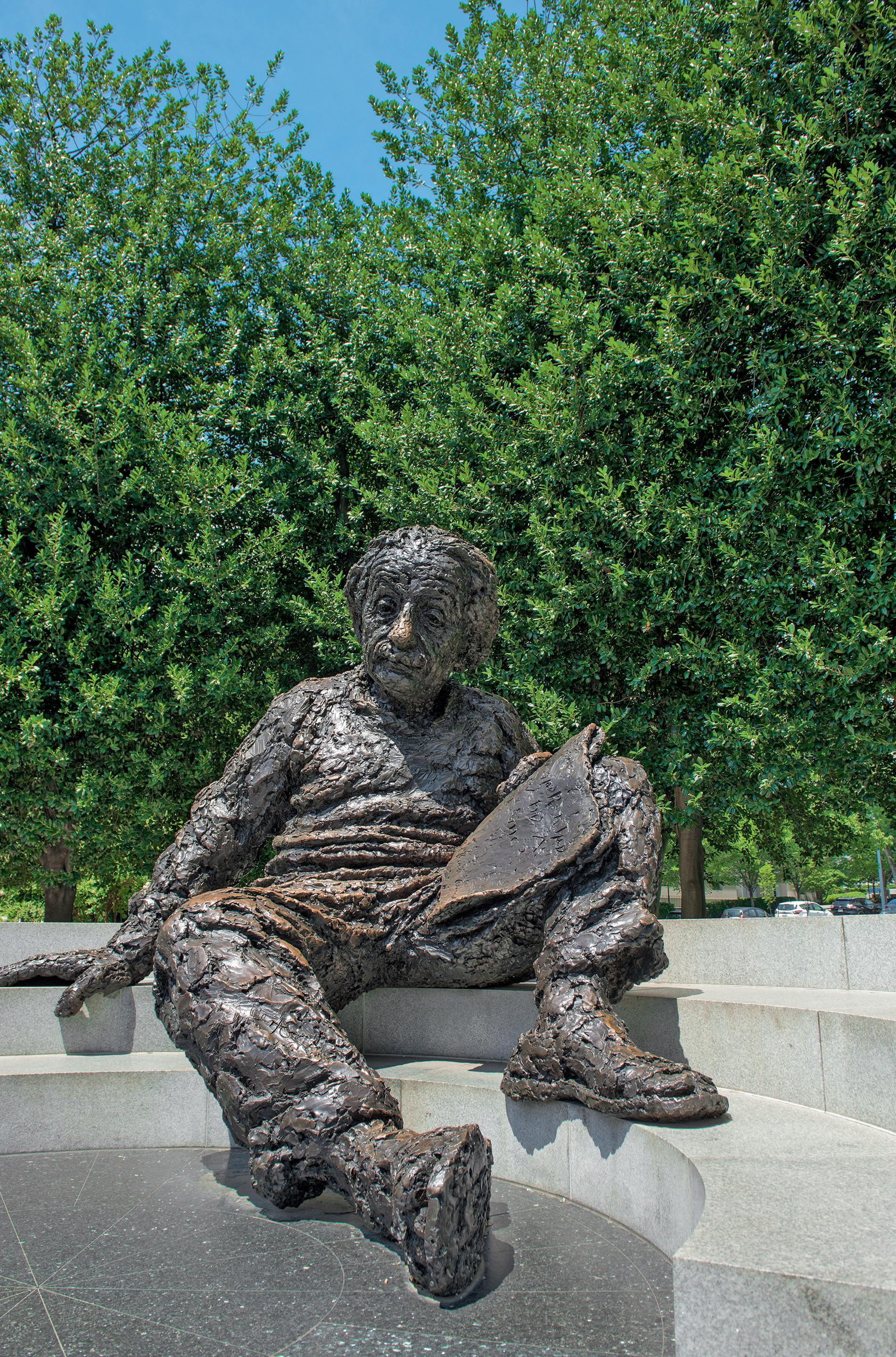
Anacostia Park Roller Rink
This is how we roll
Unique to the National Capital Park system, the Anacostia Park skating pavilion is the only roller rink in the entire National Park Service. It is always free, but in summer it becomes a family and skate master’s daily skate fest. From Memorial Day to Labor Day, the rink offers free roller skate rental of the old-fashioned 4-wheelers. Of course, you may lace up your own skates anytime throughout the year.
A rotating crew of DJs spins tunes every weekend evening in summer, which for the older set may be reminiscent of the roller rinks and moonlight skates of youth. DJ Graylin Presbury has been mixing sound at the rink since 1986, with crowd pleasing funk, oldies, R&B, go-go, rock, and top 40s. Off season, you have to bring your own beats. Serious DC skaters are known for their 360-degree jump spins, called snaps, and get their groove from their own headphones or from the DJs. Couples can often be seen “double” skating which looks like a flowing version of hand dancing on wheels. One partner, generally a lady, does most of the twisting and turning moves, with the hand of the other, a man, to provide the momentum for their energetic motion. Line dances may break out, while the veterans whiz around doing their signature moves or perfecting new ones, often at breakneck speed. For the novice or the rusty skater, the intimidation may feel real, but don’t let it. If you ask, a veteran, or someone who’s style you are grooving on, may just offer you some tips.
On a few weekends during the summer the Anacostia Rollers or other groups take over the rink for a synchronized performance that will leave onlookers clapping and cheering. The park itself was originally planned as a deep-water shipping lane and industry hub in the 1790s. Over a century, upstream agriculture caused silt build up, limiting viability as a port. Reclamation converted the swampy flats into a 1,200-acre park.
Address 1500 Anacostia Drive SE, Washington, DC 20020, +1 (202) 472-3884, www.nps.gov/anac/planyourvisit/roller-skating.htm | Getting there Metro to Potomac Avenue (Blue, Orange, and Silver Line) and walk across Sousa Bridge; bus U2, V7, V9 to Pennsylvania Avenue and Fairlawn Drive SE | Hours Daily 9am – 5pm | Tip For a completely different trip around a rink, check out DC’s roller derby scene. Members of the Women’s Flat Track Derby Association, the DC Roller Girls, compete from February through August. Check their schedule at www.dcrollergirls.com.
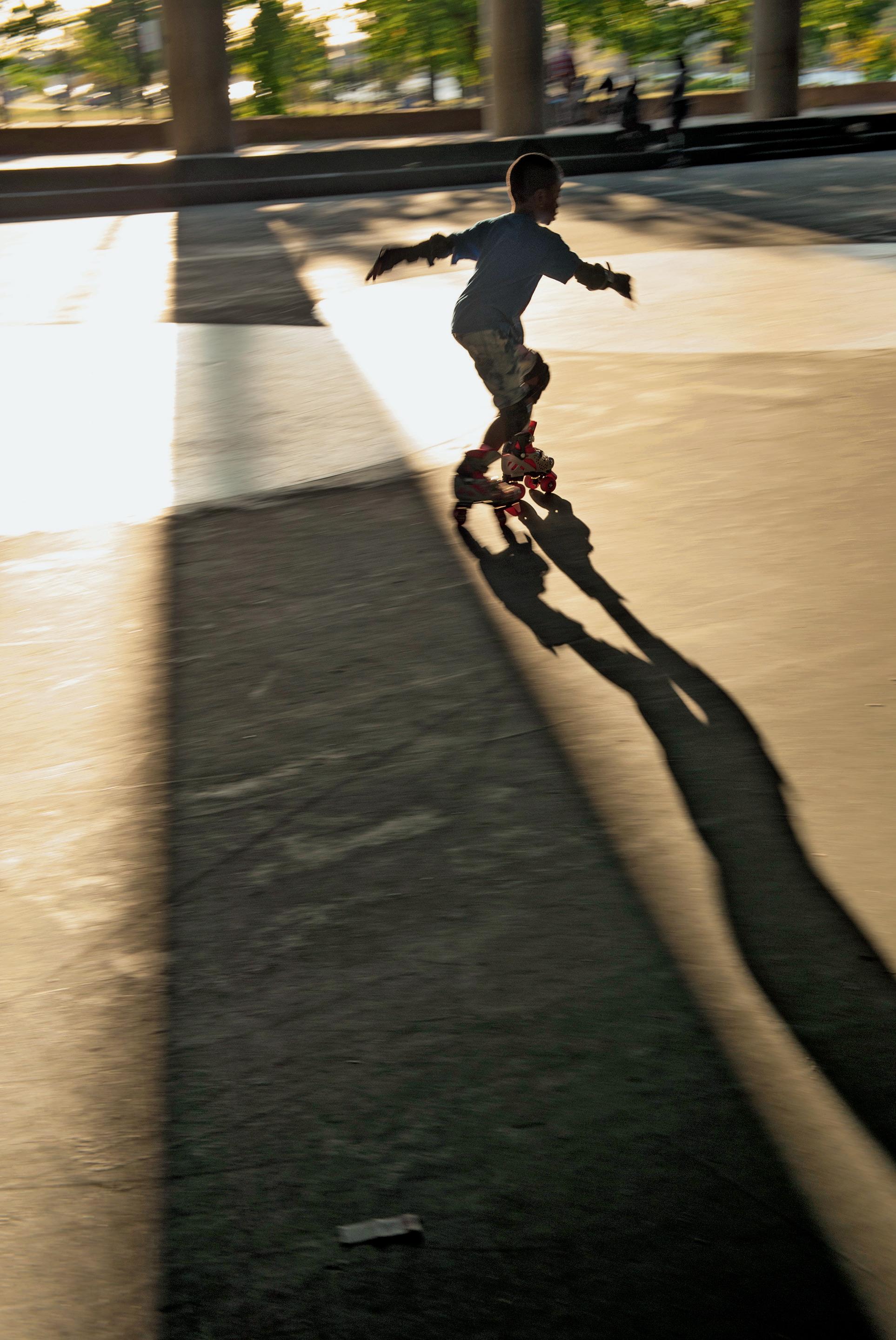
Art-o-Mat
Art is a much better addiction
Those of a certain age will immediately recognize a neon-lit vintage cigarette vending machine labeled “ART*O*MAT,” and then wonder what it is doing in the Luce Center at the Smithsonian. Come closer. Insert $5 into the machine and pull a lever; out will drop a small box or cellophane-wrapped goody the size of a pack of cigarettes. Rip off the packaging to reveal your new, portable, wearable, or useable artwork. Just try and resist doing it again.
Though what exactly comes out is a crapshoot, you may select a category or an artist based on a tiny label above each knob or by peering into the machine to try to get a glimpse of what is within. The machine is filled with paintings, prints, fused glass jewelry, leather key rings, 3-D photocards, miniatures, and whatever else has been most recently added to the mix.
Clark Whittington, a North Carolina artist from the heart of tobacco country, was inspired to create the first Art-o-Mat when a friend had a Pavlovian response to the crinkling of a cellophane snack wrapper. The sound triggered in him the desire for a snack of his own, and the idea sprang to mind that the same response might inspire others to want to purchase actual works of art as well as candy. He refurbished an old vending machine and filled it with his own photographs mounted on wood blocks. He placed the machine in a local café and sold each piece for $1. So began what Whittington sees as “a way to encourage art consumption by combining the worlds of art and commerce in an innovative form.” He hopes that his machine will create art collectors. The Art-o-Mat in the Luce Center is custom built and can hold 176 pieces by 22 artists. Within the first 12 days after it was installed in 2010, art addicts consumed a collective average of 16 works of art a day. The truth is that pulling a knob on this vending machine just once is simply not enough.
Address Smithsonian American Art Museum, Luce Center, F and 8th Streets NW, Washington, DC 20004, +1 (202) 633-7970, www.americanart.si.edu, americanartInfo@si.edu | Getting there Metro to Gallery Pl – Chinatown (Red, Yellow, and Green Line), or bus 80, P 6, X 2, X 9 to H and 9th Streets NW | Hours Sun – Sat 11:30am – 7pm | Tip Watch experts repairing and restoring art works from the collections of the three American art museums at the Lunder Conservation Center right down the hall.
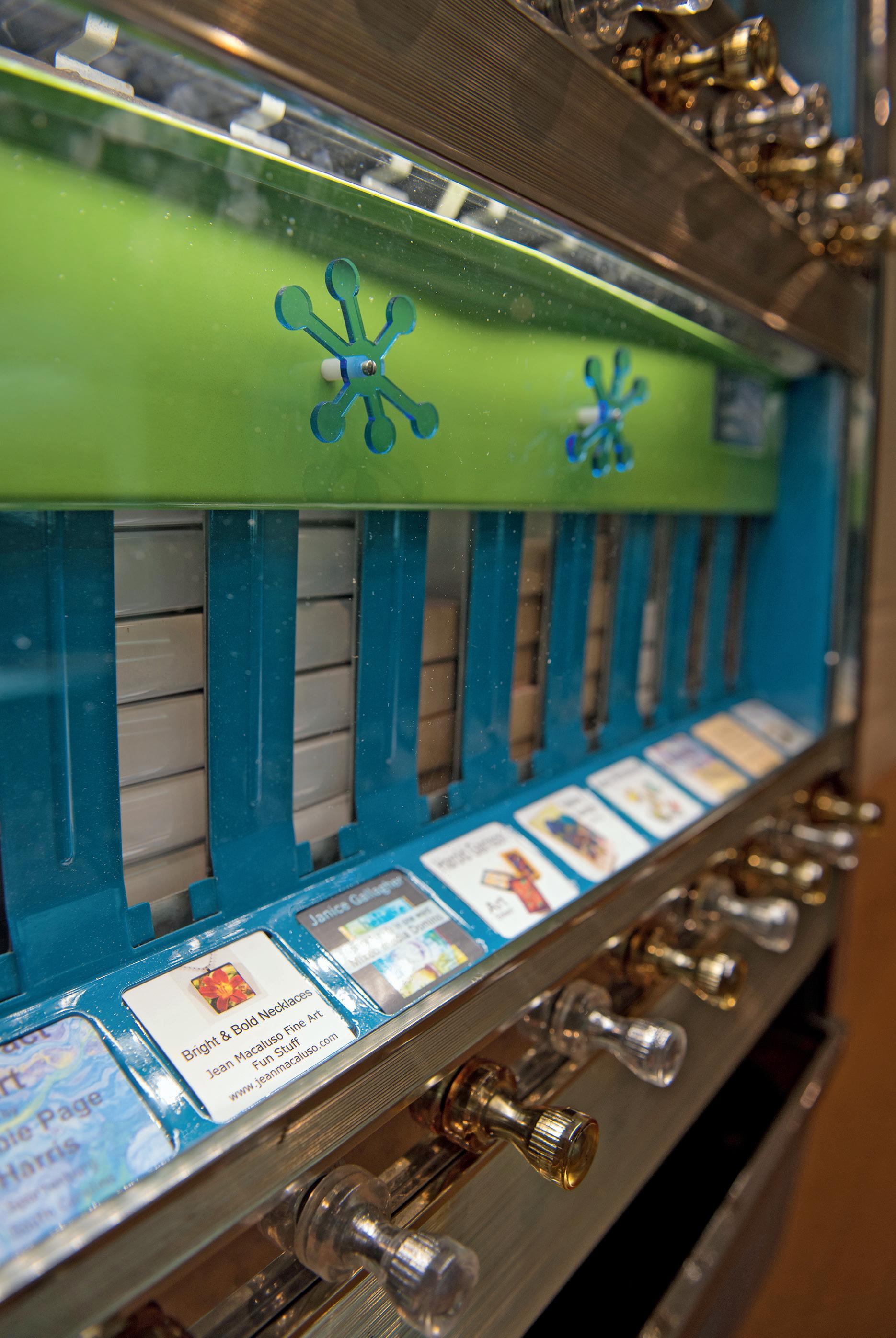
Arts Walk
Art and poetry with beer
Arts Walk is a collection of over 25 studios at the Monroe Street Market, where local artists showcase and sell their work and offer classes, workshops, pop-up markets, and social gatherings. The joys of local artistry and craft abound here.
Black Lab features vibrant and stunning scarves, entrancing wall art, and handmade books, created from manipulated photographs by photographer Leda Black. Her Female Power Project graphics and accessories are bold and impactful.
Analog, a collaboration between Craftgasm and Beltway Vintage, takes you back to the pleasures of non-electronic letter writing and materials. Think stationery, letterpress cards, journals, and more old school writers’ delights. Vintage and reused materials are the essence of this studio.
The prints of original watercolors, mostly of food motifs and recipes, and illustrated cookbooks in Marcella Kriebel Art + Illustration are simply delicious. Kuzeh Pottery creates pieces in vibrant hues and shapely forms with a “touch of Persian spice.” The pomegranate vases in an eye catching shade of red beg for a daisy or two, and the mugs with stylish handles simply must be added to one’s morning coffee routine.
Tim Kime Art is a bonanza of colorful and joyfully upcycled furnishings and décor, where a fun conversation with Tim is always a delight. Studio 15 Artisans Domonique and Marcelle create vegan body products, repurposed African inspired train cases, nostalgic pillows of vintage pennants, and mini chicken art. The American Poetry Museum is the first museum solely dedicated to “collecting, interpreting, and presenting” the rich art form of American poetry, including spoken-word, through its literary programming.
If it’s food you’re after, head over to the Brookland Pint brewpub. Arts Walk also hosts a year-round Saturday farmers market, so you can take home fresh produce, coffee, breads, and other edibles.
Address 716 Monroe Street NE, Washington, DC 20017, www.monroestreetmarket.com/ arts | Getting there Metro to Brookland-CUA (Red Line), then walk one block west on Monroe Street NE; bus H 2, H 4, H 8, 80 and others to Brookland | Hours See website for individual studio hours and events, most studios are open Thu – Sat | Tip The third Thursday of every month from May to September is open studio night, when most studios are open late and have snacks and drinks for visitors. A band plays on the stage on the plaza at the end of the Walk, and Brookland Pint pours selected brews outdoors on the Walk.
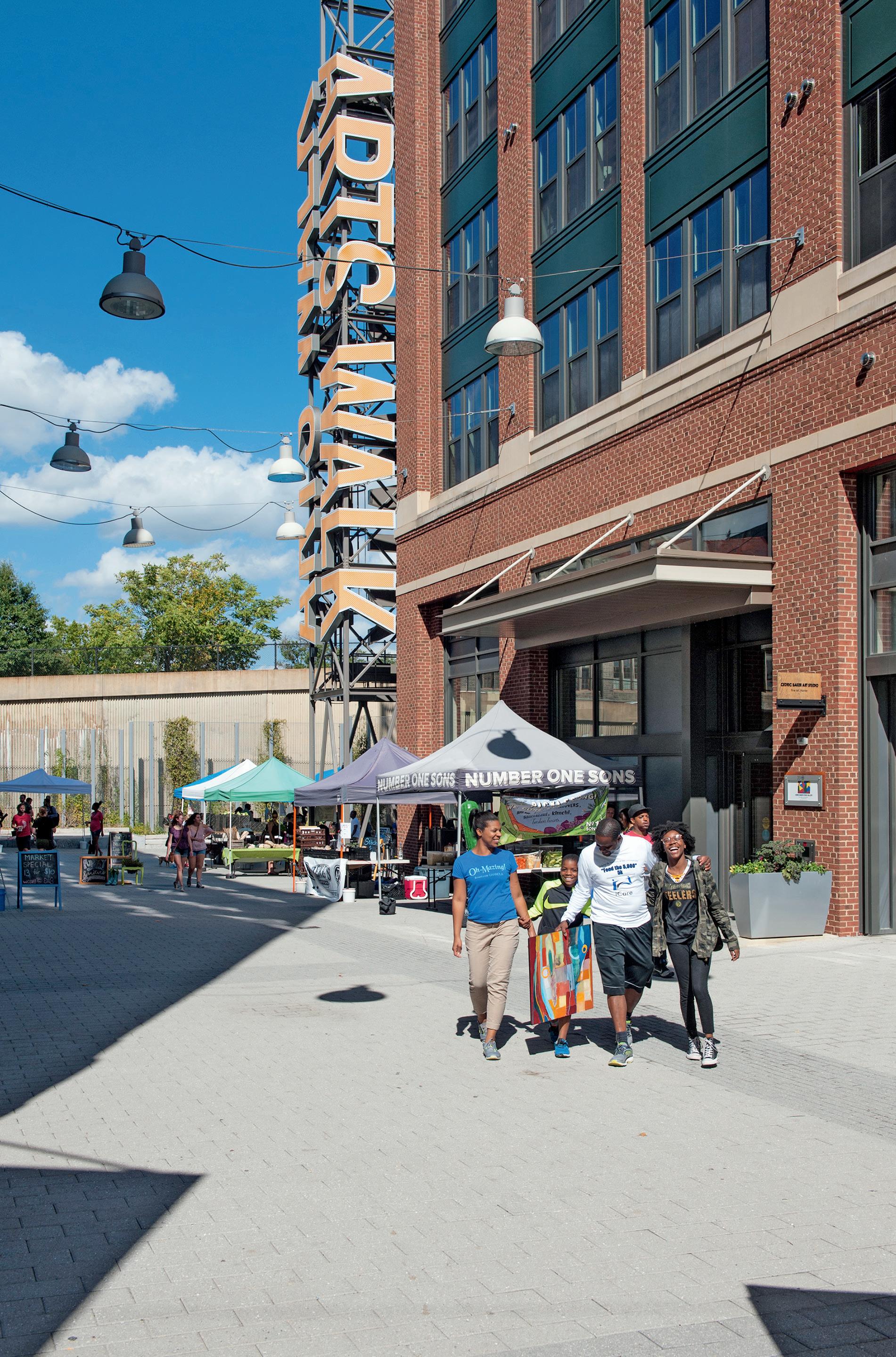
Bald Eagle Nest
Mr. President and The First Lady among the azaleas
The US National Arboretum is one of the world’s premier woody plant research facilities and public gardens, run by the US Department of Agriculture on 446 acres. Among its many horticultural collections are seasonal botanical and tree displays, tramways and trails, and even a grove of the original columns that supported the East Portico of the US Capitol building. While many flowers and shrubs within the arboretum bloom in the spring, there are attractions throughout the year, such as the Bonsai Museum, the National Grove of State Trees, the National Herb Garden, and the Asian Collection with its hardy camellias that bloom in late autumn. One standout among the arboretum’s garden displays is the Azalea Collection. Every spring, thousands of azaleas cover the sides of Mount Hamilton and Glenn Dale Hillside in a blanket of color. The best way to see this spectacle is on foot via a network of rustic woodland trails.
Since 2014, another attraction has come to the Azalea Collection and taken up residence in a tulip poplar tree. A pair of nesting bald eagles, naturally named Mr. President and The First Lady, have for the past several seasons maintained a nest, hunted for food, and raised their young here. In the 2018 season, the pair raised two eaglets, Victory and Valor. (Sadly, Valor succumbed to West Nile Virus after 3 months.) Each season an online contest is conducted to name the new eaglets.
Volunteers from the American Eagle Foundation and the USDA maintain an eagle cam so the public can observe their activities without unwanted intrusion. But if you are lucky and persistent, you might see the eagles or hear their cries as they go about their daily lives as you walk along the paths near their tree.
So, when you visit the arboretum in spring or late fall, bring binoculars and be sure to cast your gaze both down to the flora and up into the treetops of this amazing natural environment.
Address 3501 New York Avenue NE, Washington, DC 20002, +1 (202) 245-2726, www.usna.usda.gov | Getting there Metro to Stadium Armory (Blue, Orange, and Silver Line) and transfer to bus B 2 to Bladensburg Road at Rand Place NE, walk east on R Street NE to entrance | Hours Daily 8am – 5pm, except Dec 25 | Tip Every year, the Arboretum hosts scientific and crafty workshops; special events and exhibits, such as the spectacular spring Ikebana exhibit; Full Moon hikes and children’s activities. The seasonal bonsai displays in the National Bonsai and Penjing Museum are not to be missed at any time of the year.
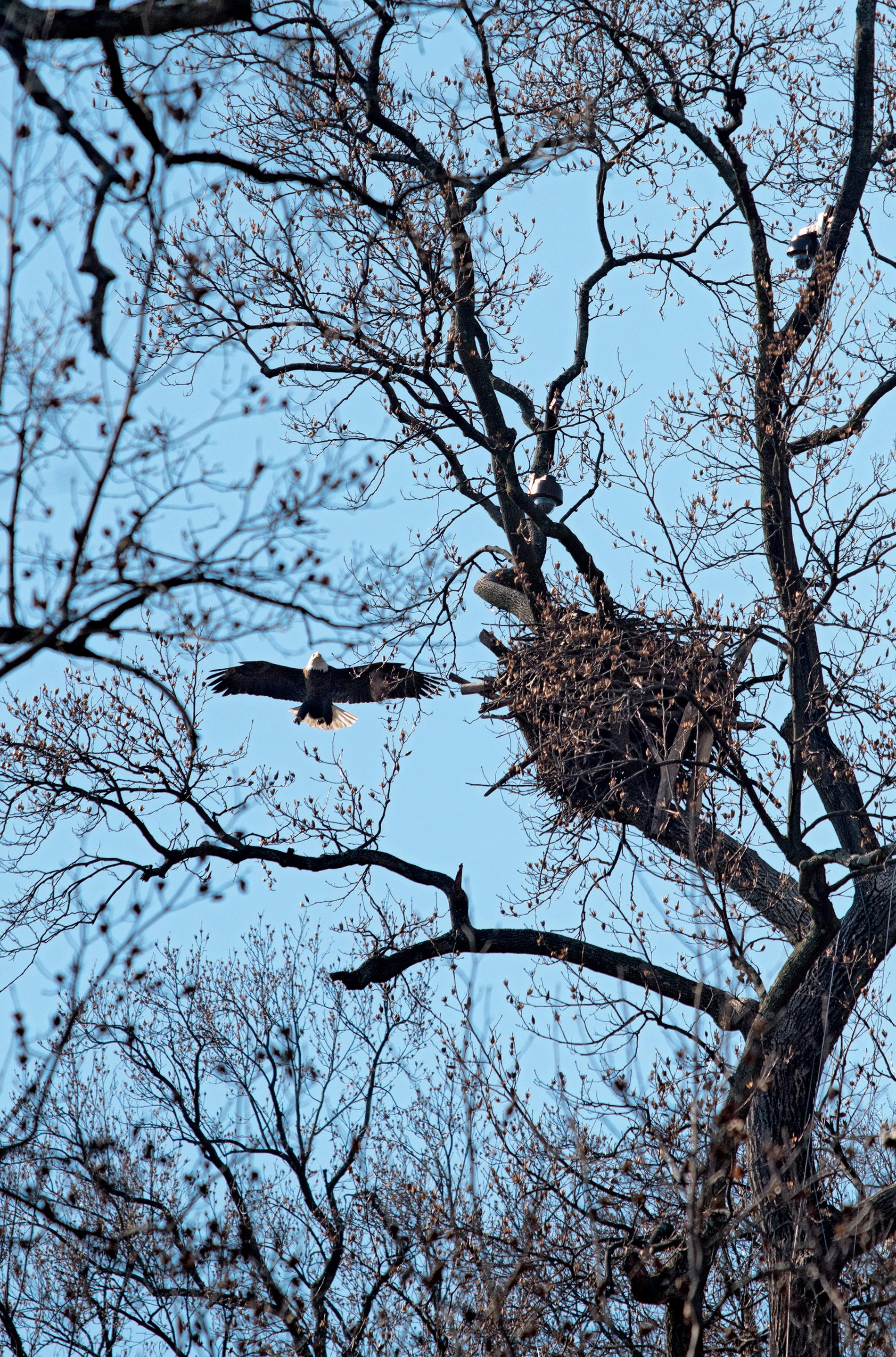
Bartholdi Fountain
The fountain cousin of the Statue of Liberty
The centerpiece of elegant Bartholdi Park, part of the US Botanic Garden, is this allegorical Fountain of Light and Water. Frédéric Auguste Bartholdi, who later designed the Statue of Liberty, created it for the US Centennial Exposition of 1876 in Philadelphia, where it was placed at the center of the esplanade. The artist loaned it with the plan to sell it and more of the same design after the fair. At the time, Frederick Law Olmsted, the father of landscape architecture, was working on his commission to design the US Capitol grounds, and after the Expo, he urged Congress to buy the fountain. Bartholdi was paid $6,000 – half the asking price. In 1877, it was placed in the heart of the Botanic Garden on the National Mall, quickly becoming a favorite nocturnal destination, as it was one of the few places in the city that was lit up at night with gas lamps. The McMillan Plan of 1904 called for the beautification of the city and redesigning the Mall, so when the new Conservatory was completed in 1932, the gardens and fountain were moved to their current locations.
The 30-foot-tall fountain, made of iron cast in Paris at the storied Durenne Foundry, is painted to look like patinated bronze and weighs over 15 tons. Three sea nymphs, with headdresses of leaves and tiptoeing on shells and coral, appear to support a large crown of light. Water flows past joyful tritons and the nymphs above with robust fish and wide-mouthed turtles spouting water below. It is now lit by energy-efficient replicas of the original gas lamps.
The surrounding park is an educational and demonstration showcase of innovative plant combinations, edibles and natives, design trends, and gardening methods.
At twilight the fountain silhouettes against the setting sun for glorious photos. Once the sun goes down, and the lights come on, this becomes quite a lovely and romantic spot.
Address 100 First Street SW, Washington, DC 20534, +1 (202) 225-8333, www.usbg.gov/ bartholdi-fountain | Getting there Metro to Federal Center SW (Blue, Orange, and Silver Line), Third and D Street exit, then left on Third Street, right on Independence to First Street SW; bus 32, 36 to Independence Avenue and First Street SW | Hours Unrestricted | Tip The annual Poinsettia Exhibit is one of the highlights of the winter holiday season at the US Botanic Garden, the oldest, busiest public garden in the US, established by an act of Congress in 1820 (100 Maryland Avenue SW, Washington, DC 20001, www.usbg.gov).
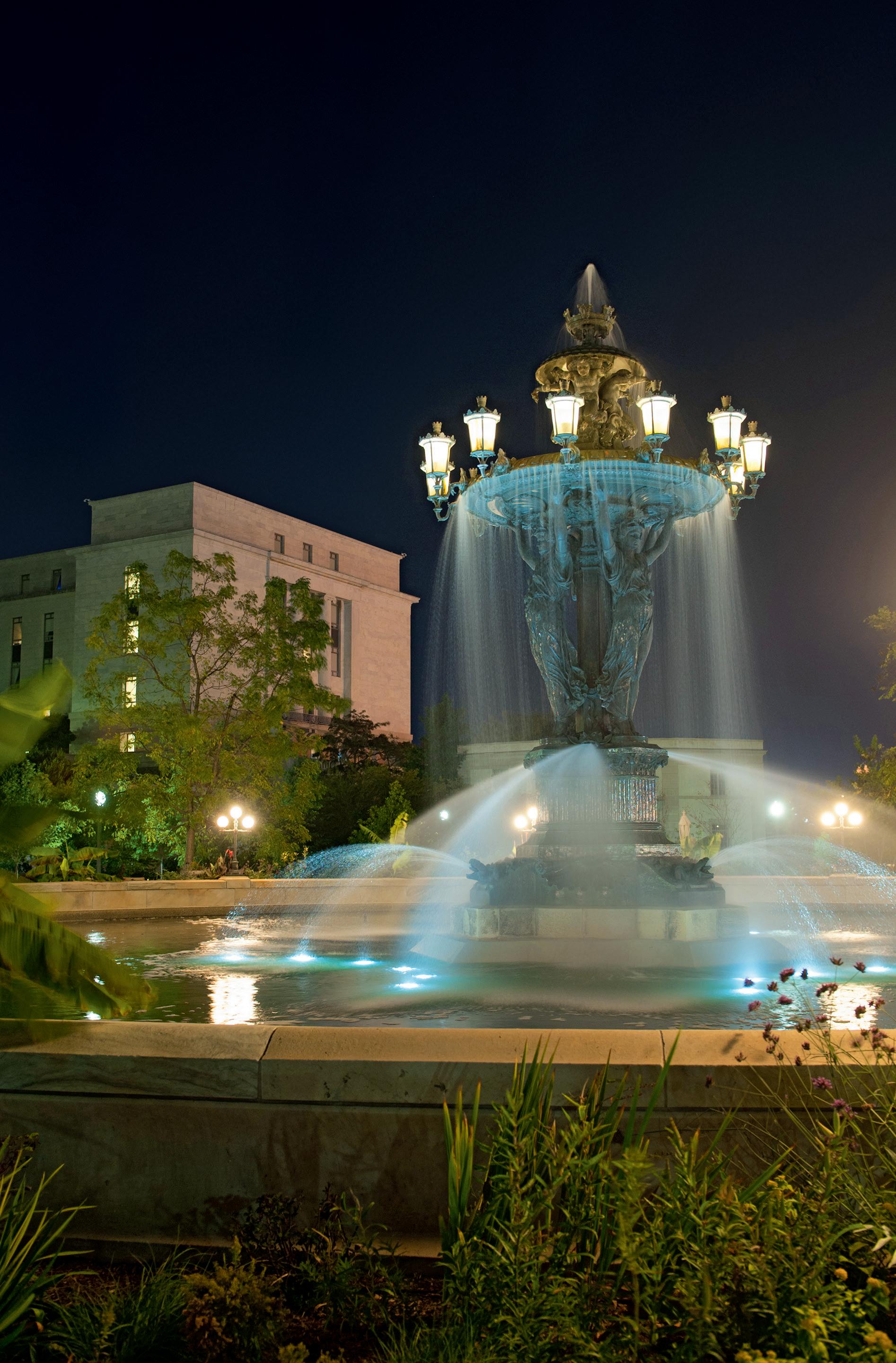
Bathyscaphe Trieste
Dive to the deepest part of the ocean
Having invented a lighter-than-air balloon to ascend beyond the stratosphere, Swiss inventor Auguste Piccard then switched focus to the depths of the oceans. Only three men have reached the deepest part of the Challenger Deep at the bottom of the Marianas Trench. Two of them got there in Piccard’s Bathyscaphe Trieste.
Piccard applied his theories of buoyancy learned in balloon flight to the Trieste, a navigable titanium diving vessel, with an observation gondola of 5-inch-thick steel, weighing over 14 tons. Its ballast was a mixture of heptane, water, and 9 tons of iron pellets in tanks that allowed it to sink. Ballast was released to control buoyancy and to allow it to resurface. It was completed in 1953 and named for the city of Trieste in Italy, where it was built. The Navy bought the vessel in 1956 and upgraded the pressure sphere in 1959 to withstand pressure up to 36,000 feet.
US Navy Lt. Don Walsh volunteered to go on the expedition to Challenger Deep, but a second volunteer would not step forth. So Piccard recruited his son, oceanographer Jacques Piccard, to take the second seat.
On January 23, 1960 Trieste descended for 4.75 hours to 35,814 feet. Exploration only lasted 20 minutes, as a Plexiglas window had cracked on descent, causing the vessel to shudder. They observed a brown “diatomaceous ooze” and deep-water flounder and sole, unexpected vertebrates to find at that depth. There was no publicity until they returned, as Admiral Arleigh Burke wanted no embarrassments if they failed. Journalists sniffed out the story but agreed with the Navy not to publish until after the mission.
Trieste was replaced in 1963 with Trieste II and moved to the US Navy Museum. The dents from the pressure of the sea are visible in the ballast tanks.
The third explorer to reach Challenger Deep was James Cameron in 2012, though only to 35,787 feet.
Address US Navy Museum, Washington Navy Yard, 736 Sicard Street SE, Washington, DC 20003, +1 (202) 685-0589, www.history.navy.mil | Getting there Metro to Navy Yard-Ballpark (Green Line), walk east on M Street SE to 11th Street SE, turn right to Visitor Gate; bus 90, 92, P 6, V5 to 11th and O Streets SE; ID or passport required | Hours Mon – Fri 9am – 5pm, Sat & Sun 10am – 5pm | Tip Also in the museum, see scale models of early Naval ships, a captured Kamikaze training aircraft, and a model of Alvin, the submersible that helped locate RMS Titanic. Take a walk around the Navy Yard, the oldest continuously operating Naval base in the world.
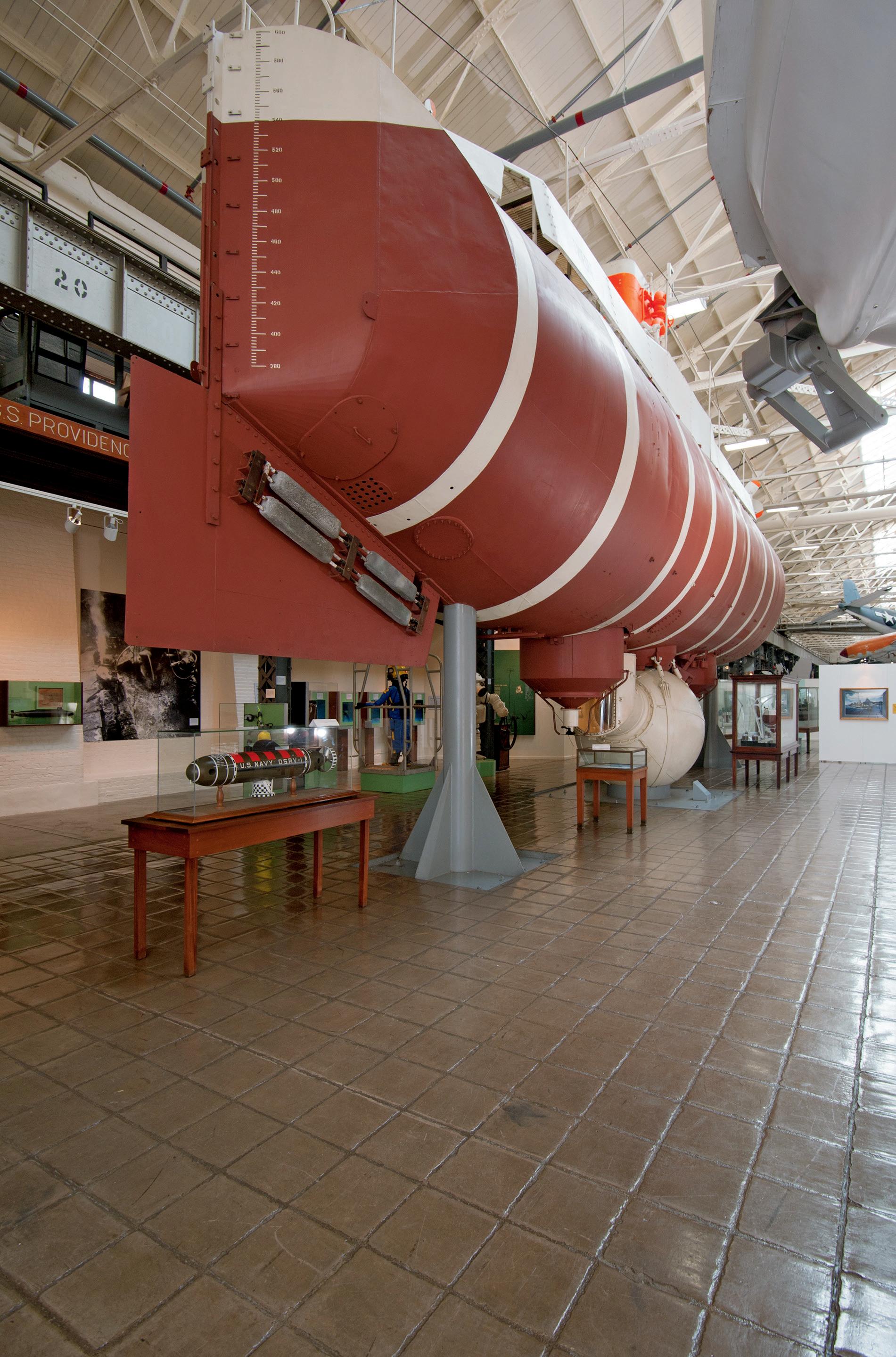
Andréa Seiger is a world and domestic traveler who has lived in Washington DC for over 30 years and has worked in nearly every business involved in tourism and hospitality. When asked how she knows so much about DC her response is usually “because I work in tourism and it is my business to know my city.” She lived in Rio de Janeiro, Brazil in the height of the Disco Era, has traveled thousands of miles on the Mayan Route of Mexico and lives to road trip around the Mid-Atlantic US and beyond. Her travel bucket list includes visiting all 50 US States; every country in the continent of the Americas and all of the New 7 Wonders of the World, the Galapagos, Macchu Picchu and Ankor Wat. She is pretty far along on the list. Itchy traveling feet get her out and about as often as possible, whether on the streets of DC or somewhere else in the world.
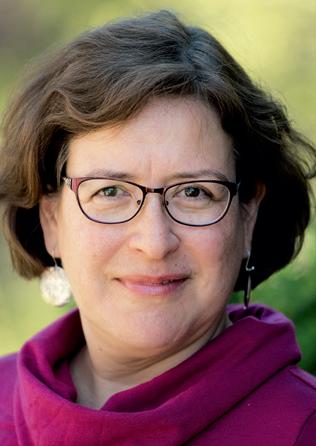
John Dean is a freelance photographer and video producer, who specializes in photographing people in different environments. He was given a Brownie 620 box camera when he was 7 years old, and he has been hooked ever since. He calls himself an “amateur” in the literal sense that he loves photography and all the doors it has opened for him. He is happy to be working in the current “golden age” of high definition documentary film making, producing videos for the past 15 years for museums and non-profit organizations. He did the photography for 111 Places in Baltimore That You Must Not Miss.
